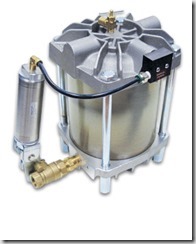Industry is beginning to understand the true cost of compressed air and it is not cheap. We work with a host of companies every day to reduce their compressed air cost and improve on the reliability of the compressed air system.
If your company only takes one step on it’s own to create a more efficient system for yourself then consider installing the correct condensate drain valves.
Using compressed air for an intended purpose is an obvious goal but we often find that the compressed air ends up being used in unnecessary and wasteful ways. Like blowing debris from parts or workers which is an obvious waste of a utility. Even more concerning is waste that occurs from improperly selected equipment and drain valves fall firmly on that line.
Everyone knows that compressed air systems create huge volumes of water that must be eliminated from the system at any location in the system where the air temperature drops, thus creating liquid water. These area’s typically include intercoolers, aftercoolers, refrigerated dryers and receivers . At these points, equipment (drain valves) must be installed to remove the liquid water from the system collection points.
A simple solution utilized in many systems is a timed based solenoid drain.
There are a couple of potential problems with a solenoid type drain valve. First, most of these drains utilize a very small orifice (port) where the water is discharged from the system making it susceptible to blockage by dirt, sludge or rust particles. Second, the drain discharges compressed air with the water which is a waste of the utility and Third, the timed function of the drain never takes the amount of water into consideration. Maybe the drain is open too long or perhaps the timed event is too short and the water is not completely discharged from the system.
A much better approach is to utilize a zero air loss type automatic drain like the Dehydra 52 shown below.
How It Works
Condensate enter the drain through one of he two inlet connections. A non-metallic float is tethered to a float arm. As condensate is collected and the translucent reservoir fills, the float rises. When the condensate reaches a designed level, the float lifts the trigger assembly and a drain cycle is initiated. The trigger assemble opens and directs control air to the valve actuator, which in turn opens the full-port drain valve.
The compressed air line from the water collection point is closed and condensate will then exit the unit. As the condensate level drops, the trigger assembly closes and the valve actuator closes the drain valve. The drain is returned to a standby condition.
Thus the collection point is fully drained and the during the draining process, no compressed air is lost from the system.
The drain valve is an area your company can easily make an impact to improve your compressed air system.




